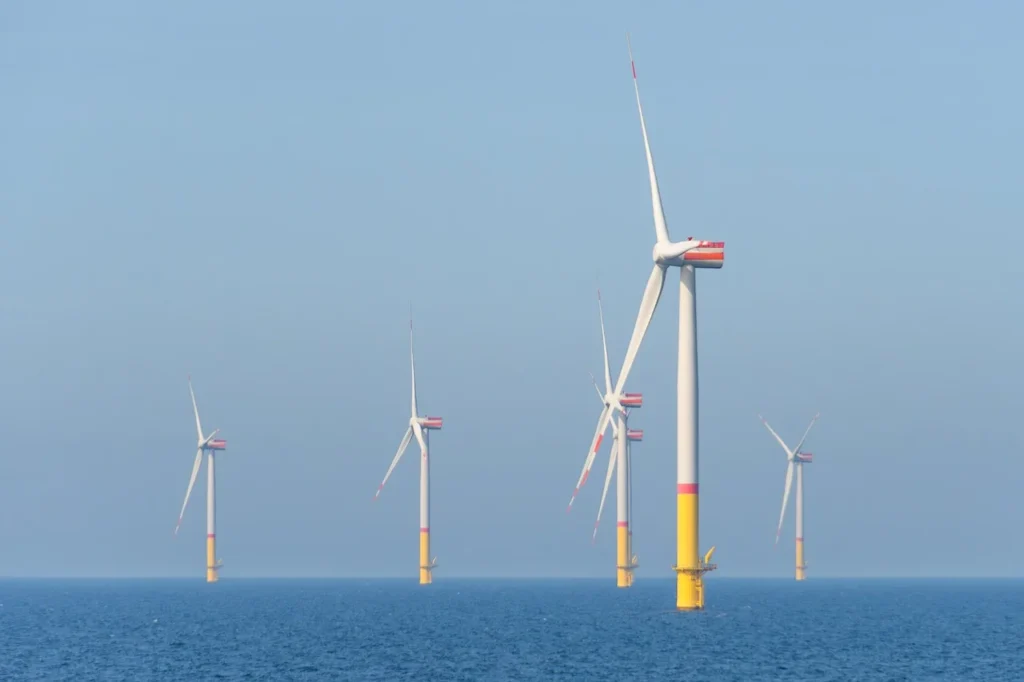The Historical Energy Dependence
For more than eight decades, Saudi Arabia has stood at the very heart of the global oil system, its vast reserves discovered in the 1930s transforming the kingdom from a desert economy into one of the wealthiest nations in the world. Oil revenues financed a remarkable social and economic transformation, funding highways, airports, modern cities, universities, healthcare systems, and social welfare programs that became hallmarks of Saudi development. Subsidized fuel, water, and power further solidified the oil wealth as the foundation of the Saudi social contract, creating prosperity and stability for generations.
However, this dependency came with inherent vulnerabilities. Oil exports, which historically accounted for more than 70 percent of government revenue, left the economy highly exposed to the volatility of global energy markets. The oil price crash of 2014, when Brent crude plummeted from over $100 to below $30 per barrel, was a wake-up call that forced Riyadh to introduce austerity measures, reduce subsidies, and dip into reserves. The pandemic-driven crisis of 2020 was even more severe, with demand collapsing to such an extent that global oil prices briefly turned negative. These shocks highlighted that an oil-dependent model was no longer sustainable in a world increasingly moving toward cleaner energy sources. The realization took root that a post-oil future would not arrive by default but had to be deliberately constructed, marking a turning point in the kingdom’s long-term strategy.
Vision 2030: The Strategic Framework
In response to these vulnerabilities, Saudi Arabia launched Vision 2030 in 2016, a sweeping reform agenda designed to future-proof the kingdom’s economy. Spearheaded by Crown Prince Mohammed bin Salman, the vision sought to diversify economic activity beyond hydrocarbons, placing new emphasis on industries such as tourism, finance, technology, and entertainment. Yet, at the heart of this transformation lies renewable energy, viewed not only as a tool for sustainability but also as an engine of competitiveness and growth in a world defined by climate imperatives.
The targets set under Vision 2030 are both ambitious and symbolic. The government has committed to sourcing half of its electricity generation from renewables by 2030, while simultaneously reducing annual carbon emissions by 278 million tons. These goals are linked directly to Saudi Arabia’s broader pledge of reaching net-zero emissions by 2060, a timeline that balances the kingdom’s continued role in global oil markets with its commitment to decarbonization. Beyond climate goals, the strategy also places Saudi Arabia on a path to becoming the world’s largest producer of green hydrogen, an emerging export commodity that has the potential to replicate the role oil once played in fueling industrial economies. Vision 2030 thus serves as both an environmental necessity and an economic survival plan, positioning renewables as the backbone of the kingdom’s new growth model.
Mega Solar and Wind Developments
Central to the realization of Vision 2030’s energy goals is the National Renewable Energy Program (NREP), which is driving the rollout of large-scale solar and wind projects across the kingdom. These projects are designed to capitalize on Saudi Arabia’s geographic advantages vast expanses of desert land and some of the highest solar irradiance levels in the world while also building new industrial and technological capacities.
The Sudair Solar Plant, with a planned capacity of 1.5 gigawatts, is among the largest single-site solar farms on the planet and is expected to provide clean electricity to more than 185,000 homes while displacing millions of tons of carbon emissions annually. The Sakaka Solar Farm, a 300-megawatt facility launched in Al Jouf province in 2019, marked the kingdom’s first utility-scale solar project and set a precedent for record-low tariffs that demonstrated the competitiveness of renewables in the region. Complementing these solar ventures is the Dumat Al Jandal Wind Farm, a 400-megawatt project also located in Al Jouf, which not only powers tens of thousands of households but also serves as a milestone in Saudi Arabia’s diversification into wind energy.
NEOM as a Living Laboratory
Perhaps the boldest symbol of Saudi Arabia’s energy and urban ambitions is NEOM, the $500 billion futuristic city under construction in the kingdom’s northwest. Unlike traditional cities that retrofit renewable systems into existing grids, NEOM is being designed from the ground up as a 100% renewable-powered metropolis. The project integrates solar, wind, hydrogen, desalination plants, and smart grids into a seamless ecosystem, making it one of the most advanced sustainability experiments in the world. Central to this vision is The Line a revolutionary linear city stretching 170 kilometers, where 9 million residents are expected to live in connected communities free of cars and powered entirely by clean energy. Artificial intelligence will manage everything from energy distribution to urban services, while vertical farming and sustainable water systems will support a circular economy. More than just a Saudi project, NEOM is positioned as a global showcase a “living laboratory” where investors, innovators, and climate-conscious entrepreneurs can test and scale technologies that may define the future of urban life worldwide.
Hydrogen as the New Oil
Among NEOM’s most groundbreaking ventures is the Green Hydrogen Project, a joint initiative with global energy players like Air Products and ACWA Power. With a projected production capacity of 600 tons of green hydrogen per day converted into green ammonia for safer transport this single facility will be the largest of its kind in the world once operational. For Saudi Arabia, hydrogen is not merely a clean fuel but a strategic commodity that could one day rival oil in economic importance. European countries such as Germany, alongside Asian powerhouses like Japan and South Korea, are already in advanced talks to secure long-term hydrogen supply agreements. These markets see Saudi Arabia as a reliable partner due to its vast renewable potential and existing export infrastructure. Analysts project that by 2050, the global hydrogen economy could generate trillions of dollars, and Saudi Arabia intends to capture a significant share of that revenue. By positioning hydrogen as the “new oil,” the kingdom is ensuring continuity of its role as a global energy supplier even as fossil fuel demand plateaus and eventually declines.
Building the Energy-Tech Industry
Saudi Arabia’s renewable energy agenda extends far beyond producing clean electricity it is about creating an industrial ecosystem that positions the kingdom as a manufacturing and technology hub. To achieve this, the government is investing in local production of critical components such as solar photovoltaic (PV) modules, wind turbine parts, and hydrogen electrolyzers. This localization strategy reduces dependence on foreign suppliers while creating new industrial clusters that generate high-value jobs. Parallel to this, Saudi Arabia is working to develop intellectual property in clean technologies, with state-backed entities and private firms setting up research and development hubs. Partnerships with global universities and tech companies are accelerating innovation in areas like long-duration battery storage, advanced carbon capture systems, and AI-driven energy management. By building these capabilities, Saudi Arabia not only meets its domestic needs but also positions itself to export energy technologies to other developing economies in the Middle East, Africa, and South Asia. The vision is clear: to transform from a fossil-fuel exporter into a global supplier of next-generation clean energy solutions.
Financing the Transition
Transforming the world’s largest oil exporter into a renewable superpower requires massive financial mobilization. The Public Investment Fund (PIF), Saudi Arabia’s $700 billion sovereign wealth fund, has taken the lead by allocating tens of billions of dollars to renewable projects. The fund’s target of reaching $2 trillion in assets by 2030 is closely tied to the success of clean energy investments, both at home and abroad. Beyond PIF, Saudi Arabia is developing innovative financial instruments to attract global investors. The issuance of green sukuk, or Sharia-compliant bonds dedicated to climate projects, has already drawn interest from European and Asian institutional investors. At the same time, Riyadh is aligning its financing models with global Environmental, Social, and Governance (ESG) frameworks, a move that boosts transparency and credibility in international markets. By blending domestic capital with foreign direct investment, Saudi Arabia is not only de-risking its energy transition but also establishing itself as a major financial hub for climate-related financing in the Middle East.
Regional Dynamics and Competition
Saudi Arabia’s clean energy push is unfolding in a region where competition for renewable leadership is intensifying. The UAE, home to Masdar and the International Renewable Energy Agency (IRENA), has already committed to tripling renewable capacity by 2030 and is developing one of the world’s largest solar parks in Dubai. Egypt has emerged as a North African leader with its Benban Solar Park, a 1.8-gigawatt mega-project that has attracted global financing. Morocco, meanwhile, has positioned itself as a pioneer with the Noor Ouarzazate Solar Complex, the world’s largest concentrated solar power facility. Against this backdrop, Saudi Arabia distinguishes itself through the sheer scale and integration of its projects, linking renewable generation with mega-urban visions like NEOM and large-scale hydrogen exports. Rather than competing in isolation, Riyadh’s strategy seeks to anchor the Gulf as a regional powerhouse in clean energy, potentially enabling joint ventures, grid interconnections, and even coordinated hydrogen exports to global markets.
Geopolitical and Market Implications
The global energy order has long been defined by oil reserves and shipping lanes, but the pivot to renewables and hydrogen is reshaping these dynamics. Saudi Arabia’s shift toward renewables has geopolitical weight, ensuring it retains influence even in a decarbonized future. Control over renewable capacity, green hydrogen production, and advanced energy technologies could become the new levers of global power, and Riyadh is determined not to lose its place at the table. This strategy also provides insurance against the risk of “stranded assets” oil fields and infrastructure that may lose value if global demand peaks earlier than anticipated. Furthermore, by building partnerships with Europe and Asia around clean energy trade, Saudi Arabia strengthens diplomatic ties that go beyond traditional oil alliances. The kingdom’s ability to pivot early and invest heavily in renewables positions it not only as a reliable energy supplier but also as a central actor in global climate negotiations and energy diplomacy.
Social Impact and Youth Opportunities
For Saudi citizens, particularly the youth who make up over 60 percent of the population, the energy transition represents a new frontier of opportunity. Unlike the oil sector, which has historically employed a limited number of nationals due to its capital-intensive nature, renewable energy and clean tech industries require a wide spectrum of skills from engineering and environmental sciences to data analytics, AI, and project management. Universities are rapidly adapting to this need, introducing specialized courses in renewable engineering, hydrogen production, and energy AI applications. These educational reforms are being paired with government programs to increase women’s participation in STEM fields, aligning with Vision 2030’s broader social reforms. Job creation in clean energy could help lower youth unemployment, foster entrepreneurship, and promote a knowledge-based economy less dependent on government subsidies. By linking energy transition with human capital development, Saudi Arabia is ensuring that its youth are not just passive beneficiaries but active architects of the kingdom’s new energy era.
Long-Term Net-Zero Strategy
Saudi Arabia’s net-zero pledge by 2060 is the cornerstone of its long-term energy vision. Achieving this goal will require a delicate balancing act leveraging oil revenues in the short term while simultaneously building a clean energy future. The strategy rests on three pillars: scaling up renewables, advancing carbon capture and storage (CCS) technologies, and pioneering hydrogen as an export fuel. Oil will continue to play a role in global energy markets for decades, but Saudi Arabia is investing to ensure that when demand tapers, its economy will not collapse. By using today’s oil wealth to fund tomorrow’s clean energy infrastructure, the kingdom is executing a dual-track strategy that secures relevance in both the hydrocarbon and post-hydrocarbon worlds. This calculated transition allows Riyadh to maintain its status as a top global energy player today while preparing to lead in a carbon-constrained tomorrow.



